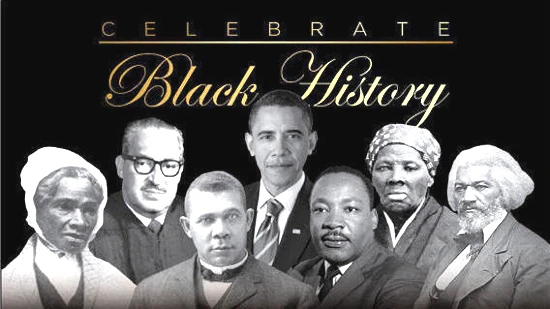From the Boundary County Human Rights Task Force
 Imagine millions of people stolen from their homes and sent to a foreign land, hundreds at a time shackled tightly together naked in chains, unable to move in the bottom of ships sailing across the ocean. Those still alive when they reached their destination were taken to auction and sold like cattle. People owning human beings as their own possessions, resulting in enslaved people trying to escape their captors by taking dark perilous journeys towards freedom.
Imagine millions of people stolen from their homes and sent to a foreign land, hundreds at a time shackled tightly together naked in chains, unable to move in the bottom of ships sailing across the ocean. Those still alive when they reached their destination were taken to auction and sold like cattle. People owning human beings as their own possessions, resulting in enslaved people trying to escape their captors by taking dark perilous journeys towards freedom.
This is American history and we must own it.
The transatlantic slave trade began in 1519, first dominated by Portugal, then Britain, France, Holland and Denmark. Jamestown, Virginia, founded in 1607, was the first English settlement to receive Africans as slaves in 1619. Indentured white servants were first used to help develop the colonies. Land owners later turned to the slave trade for laborers to grow sugar, coffee, tobacco and cotton.
Many New England Puritans justified slavery for cheap labor as an opportunity to convert them to Christianity.
Supporters of slavery claimed Black people were inherently inferior barbarians and treated them with brutality. Slave rebellions and attempts to escape were unsuccessful. In 1793, the first Fugitive Slave Act was passed to punish escaped slaves, sending them back to their owners and punishing anyone who helped them. As the repression of southern Black people grew, the antislavery and free Black northerners began a movement to abolish slavery.
The signing of the Declaration of Independence in 1776 inspired Vermont to become the first state to abolish slavery in 1777. By 1804, all Northern states abolished slavery. In the early 1800s, Quakers were one of the first organized groups to help slaves escape to freedom by setting up escape routes and shelters.
This movement grew in the 1830s becoming known as the Underground Railroad. It was not underground or a railroad but was a network of ordinary people, both Black and White. Guides called “conductors” led slaves to safe hiding places called “stations.”
One of the most well-known conductors was escaped slave Harriet Tubman who returned to the south several times to help rescue people. Frederick Douglass, also a former slave, hid 400 fugitives in his home in New York as they made their way to Canada. Lee Coffin was a Quaker who helped more than 3000 slaves.
“Freedom Quilts” were displayed on routes using the patterns as signals.
The road to freedom from slavery was hard and bloody as pro and anti-slavery tensions grew leading to the Civil War only weeks into Abraham Lincoln’s presidency in 1861. After the war ended, Lincoln issued the Emancipation Proclamation in 1862 with passage in 1863 freeing slaves held in confederate states. In 1865, the 13th amendment freed all slaves in the United States, but it was another six months for slaves in Texas to learn they were free, later known as Juneteenth.
The end of the Civil War did not end the oppression and mistreatment of Black Americans. Slavery created a system of inequality and fear of Blacks. Southern state and local laws introduced Jim Crow laws of segregation and control over Blacks for almost a century.
While no longer slaves, Black Americans in the south were still not free to choose where to sit, walk, go to school, eat, live, work, swim, what door to walk through and water fountain to drink from. The Ku Klux Klan and other White Supremacist groups used violence to terrorize and intimidate Blacks. Public lynchings were common. Civil Rights leaders organized marches and non-violent protests for equality.
Almost 100 years after slaves were freed, Martin Luther King, Jr. shook President Lyndon B. Johnson’s hand when he signed the 1964 Civil Rights Act to end segregation and Jim Crow laws and give all people equal rights under the law.
While great progress has been made, discrimination in housing and employment, inequality in voting, education and health disparities continue to exist today. And white supremacy is on the rise.
Maya Angelou, Presidential Medal of Freedom recipient, wrote an autobiography that faced difficult issues. There are people today who don’t want her story of the segregated south told, some banning her book I Know Why the Caged Bird Sings.
“Those who do not know history are doomed to repeat it.” – Winston Churchill
The history of Black Americans is American history. It is a difficult history but also one of resilience and overcoming great adversities.
There are countless inspirational Black Americans once enslaved or descendants of slaves breaking barriers: writers, scientists, inventors, artists, musicians, athletes, educators, medical professionals, lawyers, politicians, and a President of the United States.
For more information: www.blackhistorymonth.gov
